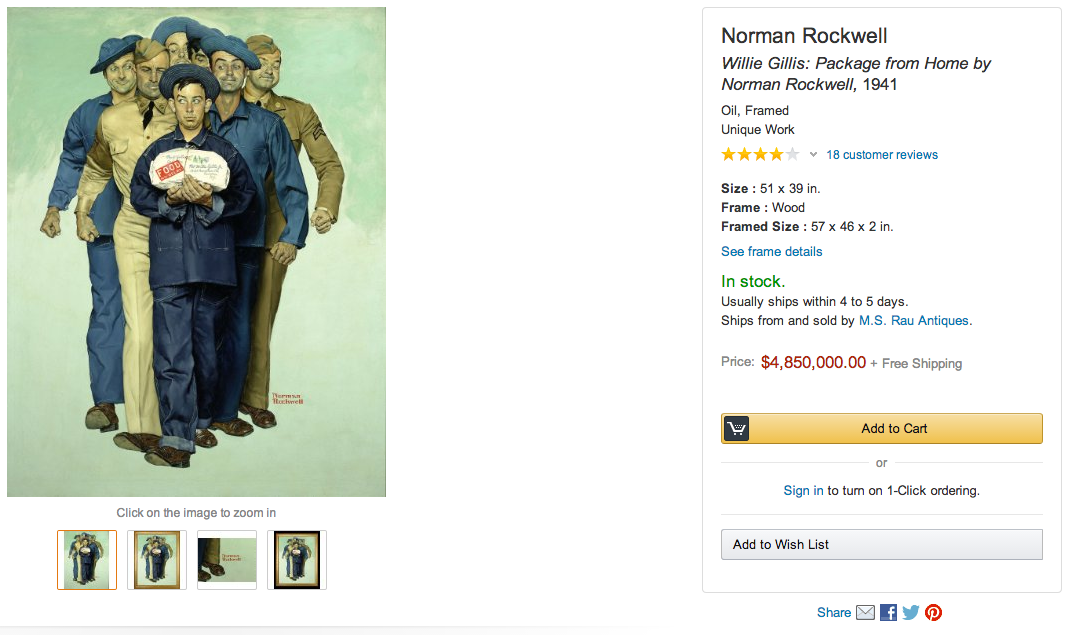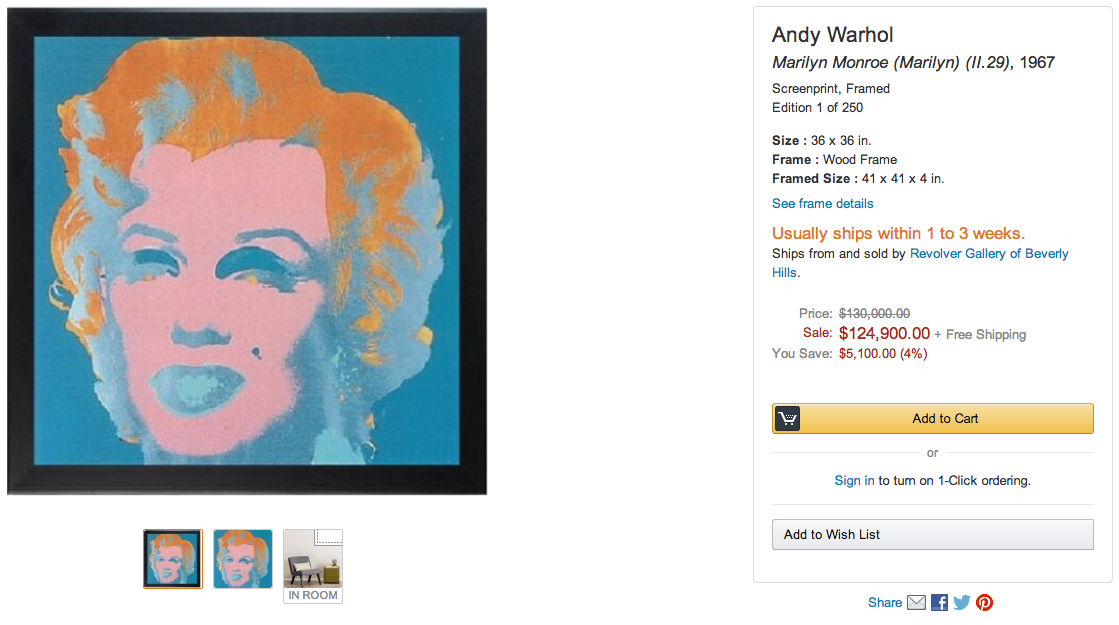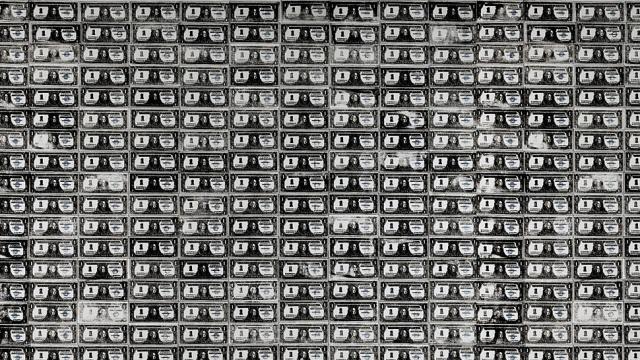It’s been more than a week since Amazon launched Amazon Art, a marketplace for fine art where online shoppers can one-click-buy directly from galleries. And while it’s great to imagine disrupting one of the wackiest, most unregulated markets in the world, the question remains: Just how good of a deal are you getting on that $US1.4 million Warhol painting?
Here’s the basic sales pitch for Amazon Art: It’s less risky. It’s up-front. It requires no shi-shi art world wiles to navigate — just a dumb click and a credit card. For the fine art market, which is reportedly hemorrhaging young millionaires who would rather buy Banksy than Hirst, it could be a game changer. There’s just one problem, though. Those wiles exist for a reason. Art dealers are there to navigate a complex world — where prices fluctuate wildly for a number of reasons — for clients who might otherwise get ripped off.

Curious what an experienced appraiser would say about Amazon Art, I got in touch with Danielle Rahm, the Director of New York Fine Art Appraisers. She hadn’t seen Amazon Art yet. “My first reaction was, ‘you’ve gotta be kidding me!,’” she laughed, after scrolling through Amazon’s pricier options. But after the shock wore off, we got down to brass tacks. “There are some major problems,” she commented. Specifically, the lack of information Amazon gives about provenance — or where a painting came from and its history. The provenance of a painting can hugely affect its value, so without that kind of information, it’s hard to know exactly what you’re buying.
Another issue, as Rahm pointed out, is that in some cases there’s very little info on what condition the piece is in. “There are some instances where there is no condition information or provenance,” she said. “The cataloguing varies and has inconsistencies.” Traditionally, if you were in the market to spend thousands of dollars on a piece of art, you’d hire an expert to assess whether a painting’s condition — how it’s been shown, whether it’s been restored, and any number of other changes — will affect its value in the long run.
For younger artists, this might not matter as much. But for big ticket items, it’s huge. For example, a $US124,000 Warhol portrait of Marilyn Monroe that’s been around for half a century is likely to have some unique wear and tear — footnotes, so to speak, about its life story. Yet its listing contains no product details besides the medium and the size. “If you’re going to be transparent, you have to provide information about provenance and condition,” said Rahm. “And if you’re not fully aware of the art market, you might think you’re getting a better deal than you are.” Buyers new to art might even be confused by some of the listings: For example, screen prints are sometimes listed as “mixed media,” which implies uniqueness. Of course, as Rahm points out, it would be easy for a buyer to call up the gallery to find out. But it would be helpful to be able to see that information up-front.

Curious about how prices on Amazon Art compare to IRL shoppers, I called up seven or eight galleries to find out. In the most extreme instance, a gallery selling a $US60,000 painting on Amazon gave me a phone quote of under $US45,000. Though it was likely an accidental mistake on cataloguing, it was… sort of a big one. Other galleries selling major artists — like Damien Hirst and Joan Miro — were frank about Amazon’s prices being “retail,” meaning they were unadjusted for the usual rounds of negotiation that might happen under normal circumstances. “In person, we’d be able to see what we can do on the price,” said one gallerist. Of course, it’s in galleries’ best interests to have buyers in person — so it makes sense that they’d want to encourage real-life transactions.
Despite all these growing pains, Amazon Art is still an awesome attempt to make a rarefied world more universally accessible; not everyone lives within driving distance of a Dali. What’s more, wealthy entrepreneurs are increasingly shying away from fine art these days, repulsed by the ripe stench of pretentious bullshit. Amazon Art could change that completely. But in Rahm’s words, be careful. Buyers should educate themselves before dropping a few grand on art online. Read up on past auction prices. Make some phone calls. Do your homework. And for the love of god, make sure you disable one-click ordering.
